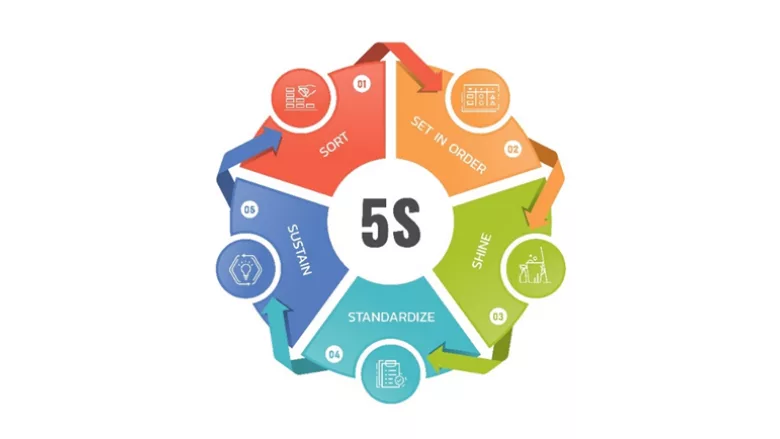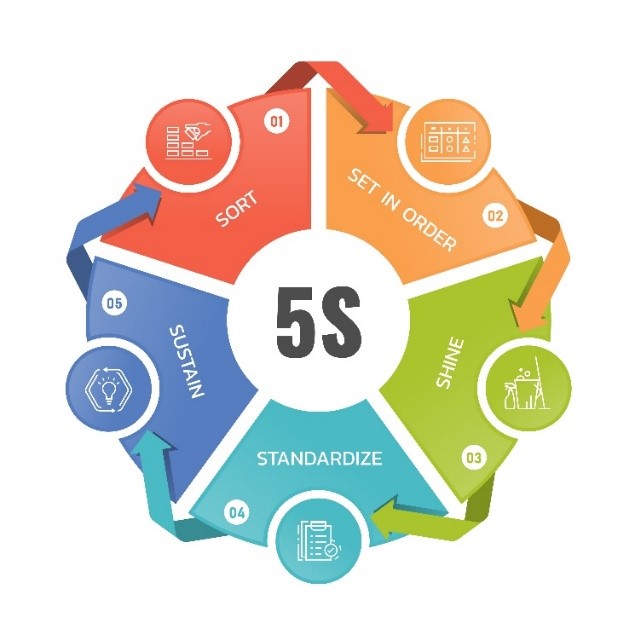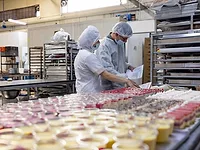Applying the "5S" Operational Effectiveness System to Food Safety

Credit: Adobe Licensed Images
Food safety and quality systems do not have to be cumbersome and difficult to follow. Too often, it is assumed that a food safety or quality mitigation strategy must add complexities that are not beneficial, cost significant time and money, and are implemented only to tick off a "check box." I can assure you that quality managers and supervisors do not get up in the morning and think, "How can I make things difficult for the operations or maintenance or warehouse (or insert any other functional group in the facility) department today?"
This article discusses a system that can be impactful to food safety and quality programs and benefit operational efficiency. This system is denoted by the number of steps and the letter S. This system, when launched and properly maintained, can be extremely beneficial across any department and work area. In 5S, each step header begins with a Japanese word that starts with the letter 'S.' The 5S system can be summarized with a simple adage: Everything has a place, and everything is in its place.
The 5S system (Figure 1) has many benefits, including:
- Process and product efficiencies, less downtime, and decreased waste
- Decreased storage and inventory
- Increase in safety and decrease in injuries
- Increase in morale and job satisfaction, with employees feeling empowered
- Positive impression to customers, suppliers, and visitors when they tour your facility.

5S Summary
The 5S principles can be delineated as follows:
- 1S: Seiri, "Sort"—Get rid of excess materials
- 2S: Seiton, "Set in Order"—Everything has a home location and is labeled
- 3S: Seiso, "Sweep/Shine"—Clean and return all items to the original or best condition
- 4S: Seiketsu, "Standardize"—Create best practices throughout the facility
- 5S: Shitsuke, "Sustain"—Maintain new practices and ensure that the "old way" does not return.
The 5S system is meant to be methodically implemented. The champion leads all the staff though each step in order. 5S is most successful when a team environment is employed, allowing everyone to have a say and be part of the change. The power of workplace culture should never be underestimated.
1S: Sort
The first step requires staff to remove all unnecessary items from the facility. This step requires eliminating items such as tools, equipment, furniture, parts, binders, packaging, and others that are not needed. These unnecessary items create clutter and waste time, because they must be sorted through or moved around to find the tool or piece of equipment that is needed at the moment. In addition, unnecessary equipment creates a sanitation issue because it is difficult to clean a cluttered, full area. Furthermore, the wrong item may be used, which could create a product issue. One of the leading causes of Class 1 recalls is undeclared allergens, and a potential risk for allergen contamination is having obsolete labels in the work area.
If in doubt, use the "red tag" system. (Note: Those food facilities that use the color red in their nonconforming product program may want to change the color name to reduce confusion.) In the red tag system, each area of the facility is named, and all items in each area are given a tag. The tag can be as simple as the date and time the item was moved to the area and by whom. A quick Google search will provide examples of red tags that can be purchased or made onsite. By the end of the day, shift, week (or whatever timeframe you decide), if no one needs that item, then it can be considered obsolete and removed from the area. Make sure to challenge what people think is really needed and, when in doubt, remove items that appear to be unnecessary or unused.
Looking for quick answers on food safety topics?
Try Ask FSM, our new smart AI search tool.
Ask FSM →
2S: Set in Order
After the excess items in the facility have been disposed of, the next step requires the establishment of a storage location for all remaining items. Reexamine work areas and consider where to place items to decrease wasted motion and travel to utilize and store the item. Searching endlessly for an item is the old way of doing things. Consider visual at-a-glance storage by utilizing shadow boards instead of cabinets and toolboxes. Cabinets have a tendency of being filled back up with "stuff." Shadow boards can be purchased commercially or created in-house from sheets of tough plastic with pegs and outlines for the tools. This gives tools an easy-to-see home that is easily cleanable.
Items that do not fit a shadow board solution should have a labeled, taped-off storage location. For example, an area of the floor can be taped off for a pallet jack or dolly, and a label can be placed on the floor to denote its storage location. If all equipment and tools have a storage location, then everything can be kept tidy and cleaned efficiently, which reduces wasted time searching for tools. This makes both a food safety win and an efficiency win.
3S: Sweep/Shine
Now that unneeded clutter has been removed and everything has a home, it is important to return tools, equipment, and materials to as close to their original state as possible. This step is about repairing or fixing any tools and equipment, as well as thoroughly cleaning everything. The workplace should shine and be as close to new as possible—this means no broken equipment, no dust or debris, no leaks or pooling water. Sometimes this step is called the "Safety step" because it eliminates many potential slips, trips, and falls, which are among the leading causes of injuries in a manufacturing facility. It is essential to review and update master sanitation schedules to accommodate the new work area practices.
4S: Standardize
This step is about ensuring that the work area stays in tip-top shape. The standardization step encourages repeatability, lack of variation, and accountability. Document the best practices so that new standards can be communicated to all affected employees, including through training. Ensure that standard operating procedures are updated. Confirm the new process with inspections that occur daily, so that work processes can be quickly rectified if they start to slip back into the ways of the old system. Many facilities create checklists to ensure that everything is maintained. Once the system is in place, the frequency of those checks can be reduced to monthly or quarterly.
It is also important to empower teams to work together and use peer reinforcement to maintain accountability. When a coworker says, "Hey, make sure to put that tool away," the sentiment is different than when a supervisor makes the same comment.
5S: Sustain
The "Sustain" step can be the most difficult of the 5S. The primary goal in this step is that the new methods have become the habit, and the gains are able to be sustained. It is easier to maintain and keep focus when the 5S project is current and everyone is thinking about it; however, when the next continuous improvement project begins, we may revert to old habits, such as dirty and cluttered work areas.
Consider positive reinforcement with incentives that praise and reward sustainability. For example, if after a week everything is still in place and no non-conformances have been documented on the daily checklist, consider awarding the staff with a pizza lunch, dessert, or whatever motivates them. A bonus does not have to be monetary to be motivating.
Putting 5S to Work
Consider using the 5S system in the workplace. It can have a positive impact on food safety and quality programs, as well as operational efficiency. In addition, maintaining a clean working area will empower and benefit your staff. Doing the project as a team will encourage unit cohesiveness. Social scientists have studied the positive effects on our social welfare of working in a clean and orderly work area. I challenge you to go de-clutter, clean up, and organize your workspace—the little endorphin kick will be worth it!









